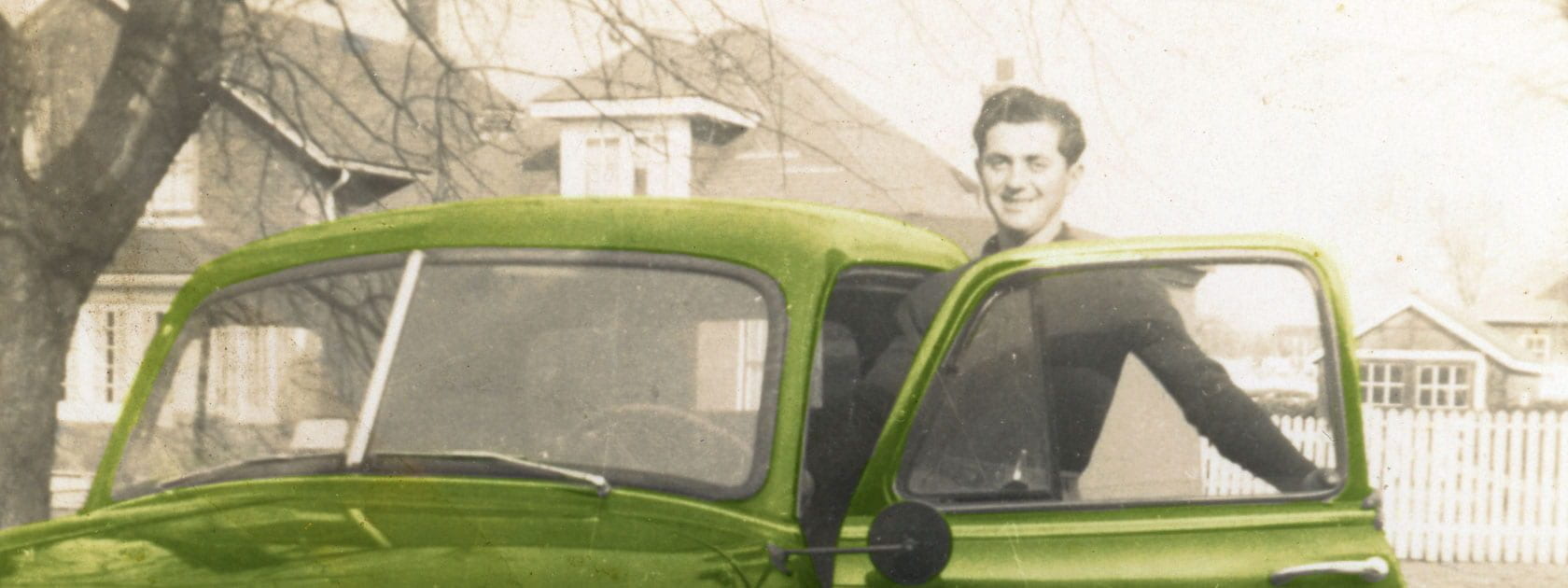Written by Tori Centurione
We live in a time where women in Canada are happily playing sports more than ever. Girls pick up organized sports now from a very young age and go on to play and participate for many years. Having more elite training and try out opportunities gives them a community to learn life skills, stay active and have fun. I personally am Italian-Canadian and I have been an ice hockey athlete since I was a child myself. The subject of discussion in this essay is very similar, she is an Italian-Canadian professional female ice hockey player, Laura Fortino, a childhood hero of mine, as she was born and raised in the same city I am from Hamilton, Ontario. We are also the same position both being defensemen and both shoot left. As well as both played minor hockey for the Stoney Creek Sabres Girls Ice Hockey Association.
Laura Michele Fortino was born on January 30th 1991 to Italian parents Ivana and Ignazio. She has three brothers Daniel, Raymond and Joseph. Her older two brothers influenced her at the age of three to begin her hockey career in a local boys hockey association (Canadian Olympic Committee, 2021). Laura engaged in boys rep minor hockey, transitioning to girls in her preteens. In 2009 she began college at Cornell University in New York state playing NCAA Division 1 Women’s Hockey (Gunnar, 2016). A few years later in 2011, Laura would then represent Team Canada’s junior U ’18 team for the first time and continue onto the U’ 22 team soon after. By the time 2014 came along she became an Olympian competing in the Sochi Winter Games and then again four years later in Pyeong Chang (Canadian olympic Committee, 2021).
The same year she was in the Olympics she started playing in the Canadian Women’s Hockey League (CWHL) until 2019 when it was discontinued. Currently she is a part of the Professional Women’s Hockey Player Association (PWHPA) on Team Harvey’s and assistant coaching the one of the Ontario Hockey League’s (OHL) junior boys team the Hamilton Bulldogs. She was appointed the position in the just past summer of 2022 and is the first female hockey coach in OHL history.
My objective is to further research women of Italian-Canadian descent in professional sports using professional ice hockey player Laura Fortino. Using her hockey career as a figure, my discussion will also include the progression and complexity of women’s hockey in Canada throughout. Using various archives like peer reviewed journals, newspaper articles, interviews and personal experience I’ve been able to make some educated conclusions.
The beginning of the game of hockey was the late 1800s. It was seen as a new sport that both men and women could take part in. At the start of the 1900s, both men’s and women’s hockey organized leagues began to heavily expand at almost an even rate (Taylor, 2019). Women’s hockey teams were made in multiple major universities including the University of Toronto. But the status of gender equality in the game would soon dissipate due to World War II. Men were pictured as explicit heroes, and to cater to the ones overseas, male hockey leagues were kept up to keep soldiers distracted during hard times (Taylor, 2019). After the war, patriarchal societal norms made it seem as if women were too fragile for sports and definitely not those physical contact like hockey. This led to the downfall of women’s hockey until its comeback in the end of the 20th century in approximately the late 1980s.
The modern era of Canadian women’s hockey is more socially-accepted. Women were now being invited to participate in the International Ice Hockey Federation’s (IIHF) World Championships (1989) and a decade later, the Winter Olympic Games in 1998 (IIHF, 2021). During this time (the late 1990s), Laura Fortino had her debut on the ice at three years of age. Much like myself, having male family members who participated in hockey influenced her to play boys hockey. This can also be attributed to the lack of female hockey locally during her childhood, as it was just starting to boom. Since then the community has grown significantly, growing 900% in the last two decades (Stzo et al., 2021).
But because hockey continues to be a male-dominated sport, there is a lack of gender equity within its industry. Despite the successes of professional players like Fortino playing D1 NCAA hockey, representing Canada on the junior and Olympic levels, and expansion of girls programs and leagues, there are still many more advancements that need to be made for female hockey players in general. A professional women’s hockey league in our country has yet to become active. The single Canadian professional option as of recent was the Canadian Women’s Hockey League (CWHL). It had six teams and still folded in 2019 after 12 seasons, affecting Laura Fortino since she was on the Markham Thunder for five seasons.
The CWHL developed from the Canadian NWHL, another league that went under. They had minimal years active due to financial struggle also (Stzo et al., 2021). The players have separate careers on top of competing so they can support their lifestyle and families. They only made roughly $10,000-$20,000 per player, with most making as low as $2,000 a season (Stzo et al., 2021). The average salary of an NHL player is over three million dollars, thirty times the amount a CWHL team makes in a season. Our society knows it is plausible to withhold a league with the best athletes and high yearly salary because we see the men’s National Hockey League prove it everyday. In recent years the league has included some pro-women in their all star events and skills competitions. 2019 marked the first year with only a few American women in the skills area. In 2020 there were women’s three-on-three games teams Canada vs. the USA and they partook in skating and shooting skills against the men as well. Laura Fortino was one of the lucky players to be selected to represent Team Canada as a defensemen. Yet women’s hockey continues to suffer, not being valued.
As a result of gender inequity in ice hockey in Canada and North America as a whole, multiple avenues to fill in the gaps for women’s hockey have had to develop in recent years. For example, for the minor players, the international ‘World Girls Ice Hockey Weekend’ is held annually. It provides young girls across the world the opportunity to try hockey out by learning basic skills with ice time, most equipment provided and high level coaching. For the professionals including Laura Fortino being an avid participant, a campaign was created under the name of #ForTheGame after the CWHL was foreclosed on in 2019. Two hundred of the world’s best female hockey players from different teams and countries of origin protested and sent out joint statements (Jiwa, 2019). Expressing that they will not play in any season in North America until they are provided with a substantial amount of necessary resources to have a consistently sustainable professional women’s league (Fortino, 2019). Next also in 2019, a non profit organization or league meant to promote professional women’s hockey visibility was created (Stzo et al., 2021).
The Professional Women’s Hockey Player Association (PWHPA) is a collection of four teams of all premier professional players from Canada and the United States. Laura Fortino is on one of these teams called Team Harveys. Their belief is that the professional women should not have to compromise in regards to having health benefits, liveable wages and adequate training facilities and resources to maintain a professional hockey team (PWHPA, 2022). To campaign they hold “Dream Gap” tours and created the hashtag #StickInTheGround. The Dream Gap tours are a series of mini tournaments in various cities across North America played between the teams every year until a league can be made. Meanwhile, #StickInTheGround is their initiative to rally together businesses and the sport to support their mission because “If boys can dream of a pro career why cant girls?” (PWHPA, 2022).
As a result of the imbalance of equity between men’s and women’s hockey, female hockey players’ major force for change is through cultural resistance. By playing hockey they become social activists indirectly. Just by participating in what they have a passion for. Showing that girls are just as much athletically inclined as boys are. Despite negativity from society and having the odds against them, female hockey players continue to excel and grow. Gender is no factor in deciding the level of skill a player withholds. We need to reevaluate preconceived notions of women in sports because hard work, commitment and love of the sport is what creates the ideal hockey player.
As for Laura Fortino, she continues to help improve and be a positive influence on the hockey community. The way Fortino and her teammates advocate for female hockey is admirable because they know they will heavily impact and create new opportunities for the future generation of girls for the best. We need to showcase more female athlete hero’s for girls and boys to idolize. To gain further insight into Fortino I would recommend doing a personal interview with her or one of her family members to learn about her life experiences and opinions. Hopefully getting more information regarding her Italian identity specifically as there was very little. I am curious about her attitudes around how her heritage has impacted her personal and hockey lives. As well as opinions on gender inequity in hockey and her early hockey career days.
Bibliography
Bean, Corliss, Tanya Forneris, and Michael A. Robidoux. “The Perspective of Ontario Girls’ Youth Hockey as an Alternative Sport Model.” Women in Sport & Physical Activity Journal, vol. 22, no. 2. 2014. pp. 63–70.
Carlsson, Gunnar. “Profile: Team Canada’s Laura Fortino.” Pension Plan Puppets, Vox Media, 25 March 2016, www.pensionplanpuppets.com/cwhl/2016/3/25/11285250/profile-team-canadas-laura-fortino.
Ditcher, M. “’We all want the same thing’: PHF , PWHPA Still Split in Crucial Year for Women’s Hockey.” CBC Sports. CBCnews. 16 November 2021. https://www.cbc.ca/sports/hockey/pwhpa-phf-stalemate-olympics-update-1.6249812.
“IIHF – Women’s Ice Hockey.” IIHF International Ice Hockey Federation, 2021. www.iihf.com/en/static/5068/women-s-hockey.
Jiwa, Jehan. “#ForTheGame Movement’s Impact on Women’s Hockey, Women’s Hockey Life.” Womenshockeylife.com, 28 May 2019, womenshockeylife.com/forthegame-impact/.
Laura Fortino. “We May Represent Different Teams, Leagues, and Countries but Collectively We Stand as One #FortheGame.” Instagram, 2 May 2019, www.instagram.com/p/Bw9y_wnhCt_/?igshid=1e3qwcb50o3l.
“Laura Fortino.” Team Canada – Official Olympic Team Website, Canadian Olympic Committee, 21 September 2021, olympic.ca/team-canada/laura-fortino/.
Mckee, Taylor, and Matteau Rushbrook, Carnie. “Rewriting the rule books: ensuring Centurione 7 gender equity in Canadian hockey.” theconversation.com, 22 June 2022, theconversation.com/rewriting-the-rule-books-ensuring-gender-equity-in-canadian-hockey-183901.
Pelak, Cynthia Fabrizio. “Women’s Collective Identity Formation in Sports: A Case Study from Women’s Ice Hockey.” Gender & Society, vol. 16, no. 1. 2002. pp. 93–114.
Professional Women’s Hockey Players Association. PWHPA. 28 October 2022. https://pwhpa.com/Szto, C., Desrochers, M., Emard, K., Pegoraro, A., Galas, K., Morris, E., … Richards, K. “ForTheGame: Social Change and the Struggle to Professionalize Women’s Ice Hockey.” Sociology of Sport Journal, vol. 38, no. 4. 2021. pp. 325–334. https://doi.org/10.1123/ssj.2020-0085.
Taylor, Rhonda Leeman. “A Glorious Game: The History of Women’s Hockey: Women’s Hockey Life.” Womens Hockey Life, 11 September 2019. womenshockeylife.com/womens-hockey-history.
How to cite this page:
MLA STYLE: Author. “Title.” Title of container, Other contributors, Number (vol. and/or no.), Publisher, Publication Date, Location (pages, paragraphs and/or URL, DOI or permalink). 2nd container’s title, Other contributors.
Centurione, Tori. “Italian-Canadian Professional Female Ice Hockey: Laura Fortino.” In Archival Research of Italian-Canadian Immigration and Culture, supvr. T. Russo, issue 4: Sports in Italian-Canadian Communities, Brock University, December 2022, St. Catherines (Sports in Italian-Canadian Communities – Italian-Canadian Narratives Showcase (italianheritage.ca)). Italian-Canadian Narratives Showcase (ICNS), Sandra Parmegiani and Nivashinee Ponambalum.


